# Adversarial_Autoencoder
**Repository Path**: ying_yu_bao/Adversarial_Autoencoder
## Basic Information
- **Project Name**: Adversarial_Autoencoder
- **Description**: No description available
- **Primary Language**: Unknown
- **License**: MIT
- **Default Branch**: master
- **Homepage**: None
- **GVP Project**: No
## Statistics
- **Stars**: 0
- **Forks**: 1
- **Created**: 2019-12-05
- **Last Updated**: 2022-05-04
## Categories & Tags
**Categories**: Uncategorized
**Tags**: None
## README
# Adversarial autoencoders
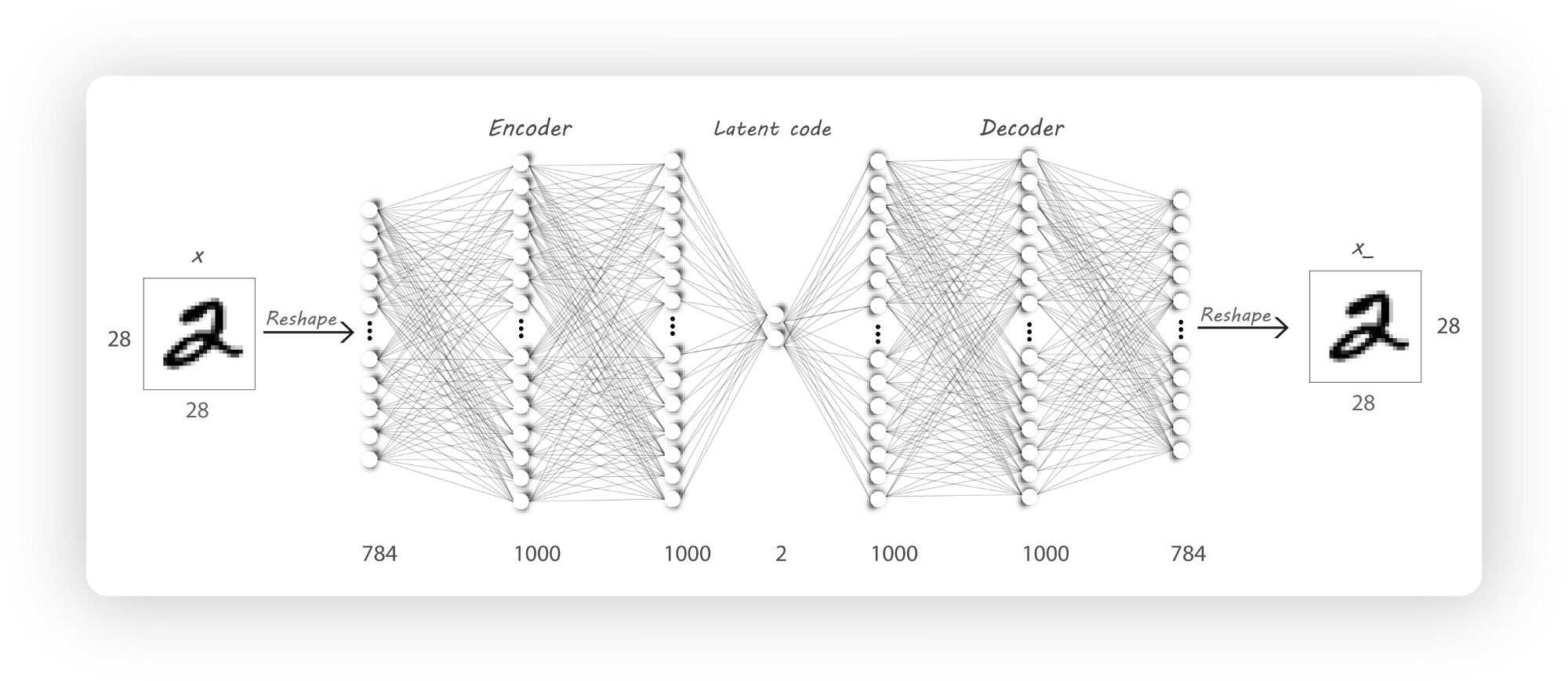 This repository contains code to implement adversarial autoencoder using Tensorflow.
Medium posts:
1. [A Wizard's guide to Adversarial Autoencoders: Part 1. Autoencoders?](https://medium.com/towards-data-science/a-wizards-guide-to-adversarial-autoencoders-part-1-autoencoder-d9a5f8795af4)
2. [A Wizard's guide to Adversarial Autoencoders: Part 2. Exploring the latent space with Adversarial Autoencoders.](https://medium.com/towards-data-science/a-wizards-guide-to-adversarial-autoencoders-part-2-exploring-latent-space-with-adversarial-2d53a6f8a4f9)
3. [A Wizard's guide to Adversarial Autoencoders: Part 3. Disentanglement of style and content.](https://medium.com/towards-data-science/a-wizards-guide-to-adversarial-autoencoders-part-3-disentanglement-of-style-and-content-89262973a4d7)
3. [A Wizard's guide to Adversarial Autoencoders: Part 4. Classify MNIST using 1000 labels.](https://medium.com/towards-data-science/a-wizards-guide-to-adversarial-autoencoders-part-4-classify-mnist-using-1000-labels-2ca08071f95)
## Installing the dependencies
Install virtualenv and creating a new virtual environment:
pip install virtualenv
virtualenv -p /usr/bin/python3 aa
Install dependencies
pip3 install -r requirements.txt
***Note:***
* *I'd highly recommend using your GPU during training.*
* *`tf.nn.sigmoid_cross_entropy_with_logits` has a `targets` parameter which
has been changed to `labels` for tensorflow version > r0.12.*
## Dataset
The MNIST dataset will be downloaded automatically and will be made available
in `./Data` directory.
## Training!
### Autoencoder:
#### Architecture:
To train a basic autoencoder run:
python3 autoencoder.py --train True
* This trains an autoencoder and saves the trained model once every epoch
in the `./Results/Autoencoder` directory.
To load the trained model and generate images passing inputs to the decoder run:
python3 autoencoder.py --train False
### Adversarial Autoencoder:
#### Architecture:
This repository contains code to implement adversarial autoencoder using Tensorflow.
Medium posts:
1. [A Wizard's guide to Adversarial Autoencoders: Part 1. Autoencoders?](https://medium.com/towards-data-science/a-wizards-guide-to-adversarial-autoencoders-part-1-autoencoder-d9a5f8795af4)
2. [A Wizard's guide to Adversarial Autoencoders: Part 2. Exploring the latent space with Adversarial Autoencoders.](https://medium.com/towards-data-science/a-wizards-guide-to-adversarial-autoencoders-part-2-exploring-latent-space-with-adversarial-2d53a6f8a4f9)
3. [A Wizard's guide to Adversarial Autoencoders: Part 3. Disentanglement of style and content.](https://medium.com/towards-data-science/a-wizards-guide-to-adversarial-autoencoders-part-3-disentanglement-of-style-and-content-89262973a4d7)
3. [A Wizard's guide to Adversarial Autoencoders: Part 4. Classify MNIST using 1000 labels.](https://medium.com/towards-data-science/a-wizards-guide-to-adversarial-autoencoders-part-4-classify-mnist-using-1000-labels-2ca08071f95)
## Installing the dependencies
Install virtualenv and creating a new virtual environment:
pip install virtualenv
virtualenv -p /usr/bin/python3 aa
Install dependencies
pip3 install -r requirements.txt
***Note:***
* *I'd highly recommend using your GPU during training.*
* *`tf.nn.sigmoid_cross_entropy_with_logits` has a `targets` parameter which
has been changed to `labels` for tensorflow version > r0.12.*
## Dataset
The MNIST dataset will be downloaded automatically and will be made available
in `./Data` directory.
## Training!
### Autoencoder:
#### Architecture:
To train a basic autoencoder run:
python3 autoencoder.py --train True
* This trains an autoencoder and saves the trained model once every epoch
in the `./Results/Autoencoder` directory.
To load the trained model and generate images passing inputs to the decoder run:
python3 autoencoder.py --train False
### Adversarial Autoencoder:
#### Architecture:
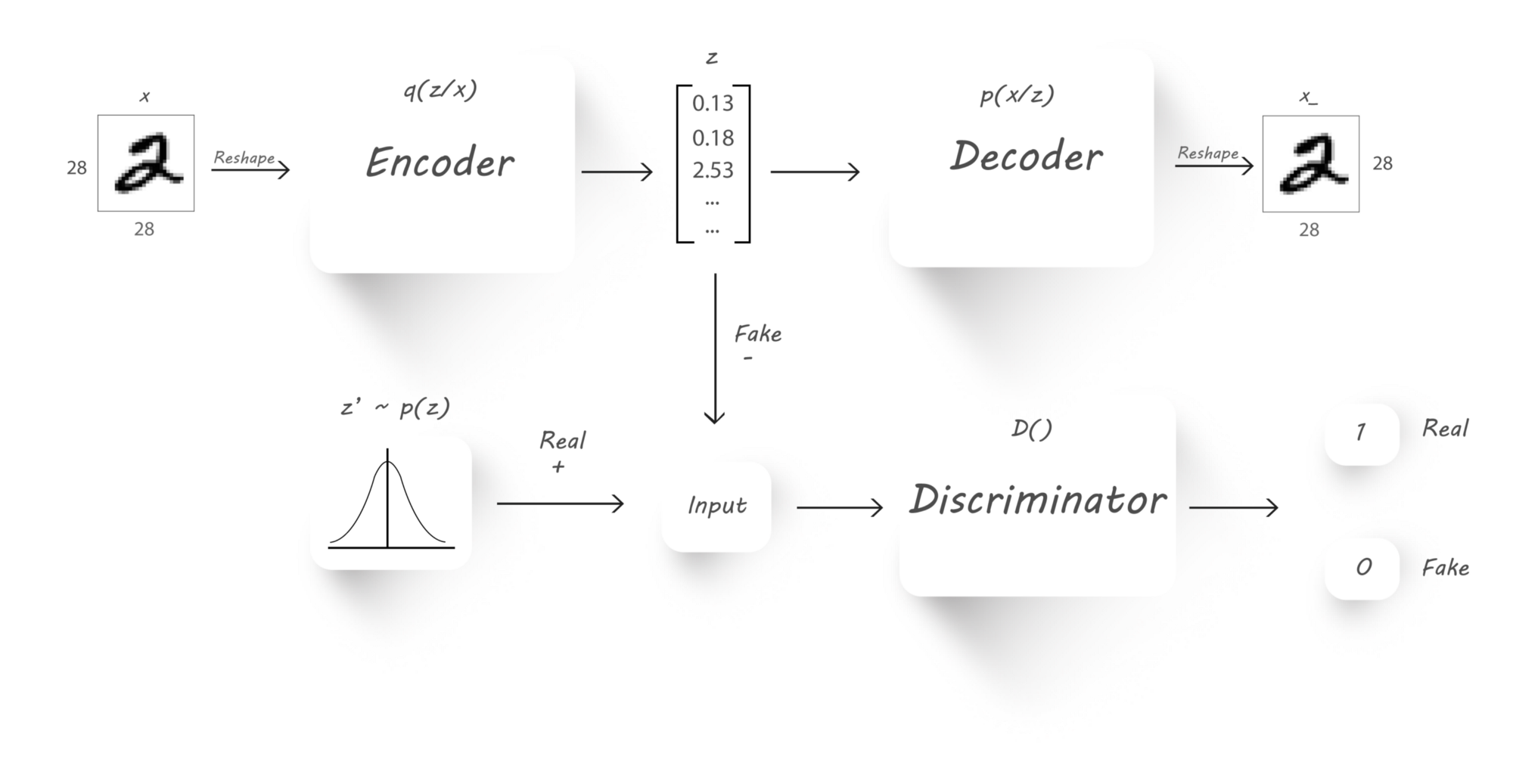 Training:
python3 adversarial_autoencoder.py --train True
Load model and explore the latent space:
python3 adversarial_autoencoder.py --train False
Example of adversarial autoencoder output when the encoder is constrained
to have a stddev of 5.
Training:
python3 adversarial_autoencoder.py --train True
Load model and explore the latent space:
python3 adversarial_autoencoder.py --train False
Example of adversarial autoencoder output when the encoder is constrained
to have a stddev of 5.
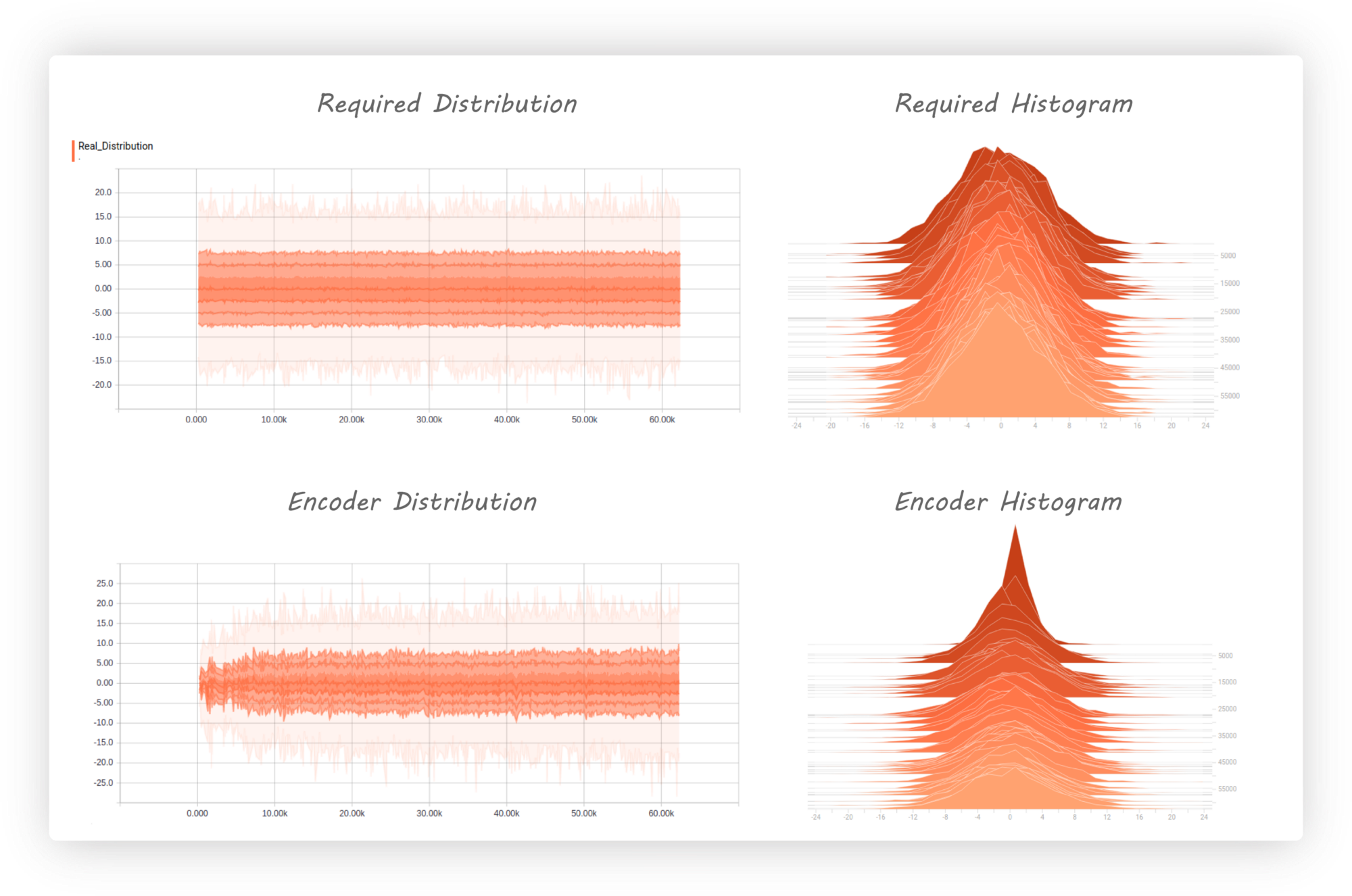 **_Matching prior and posterior distributions._**
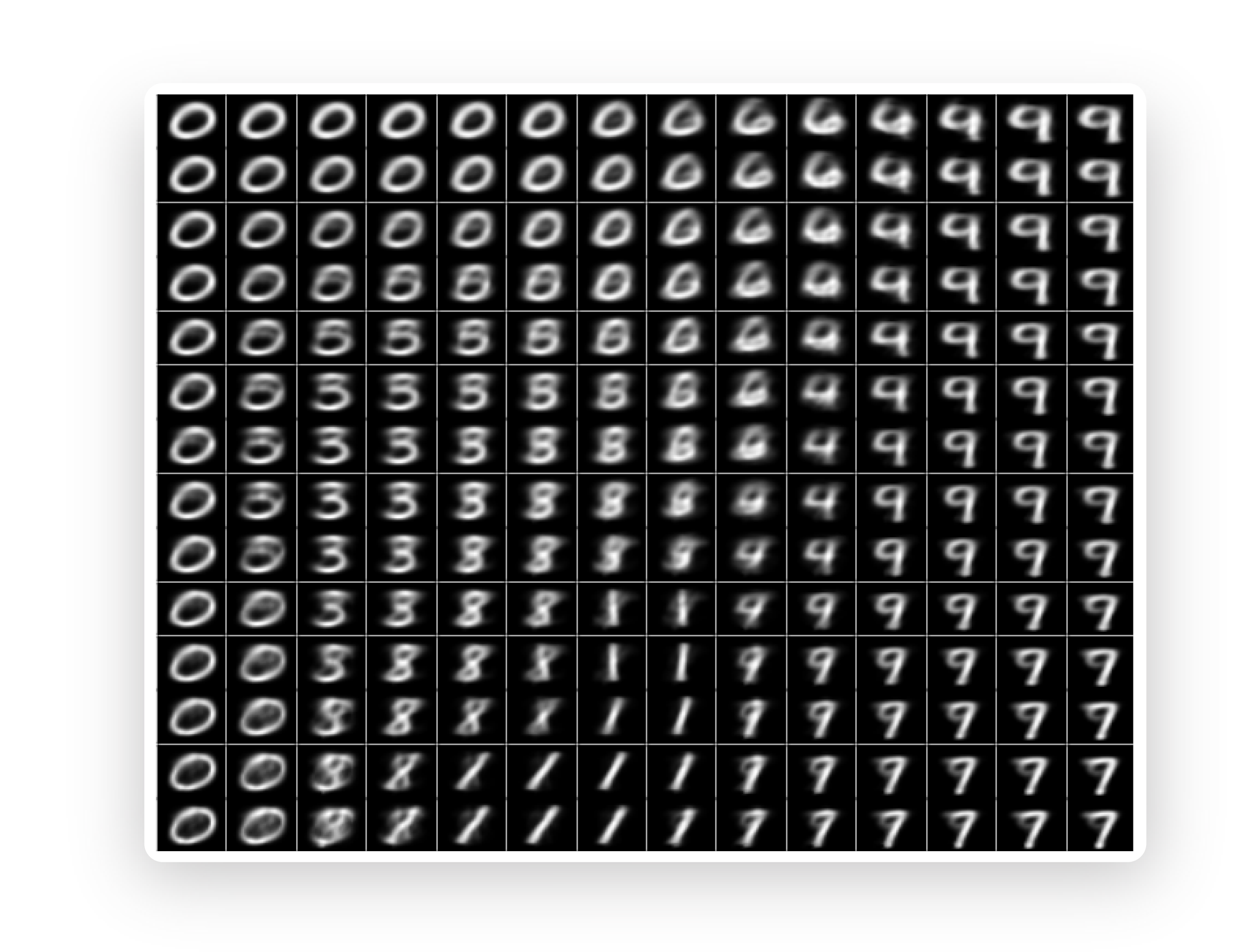
**_Distribution of digits in the latent space._**
### Supervised Adversarial Autoencoder:
#### Architecture:
**_Matching prior and posterior distributions._**

**_Distribution of digits in the latent space._**
### Supervised Adversarial Autoencoder:
#### Architecture:
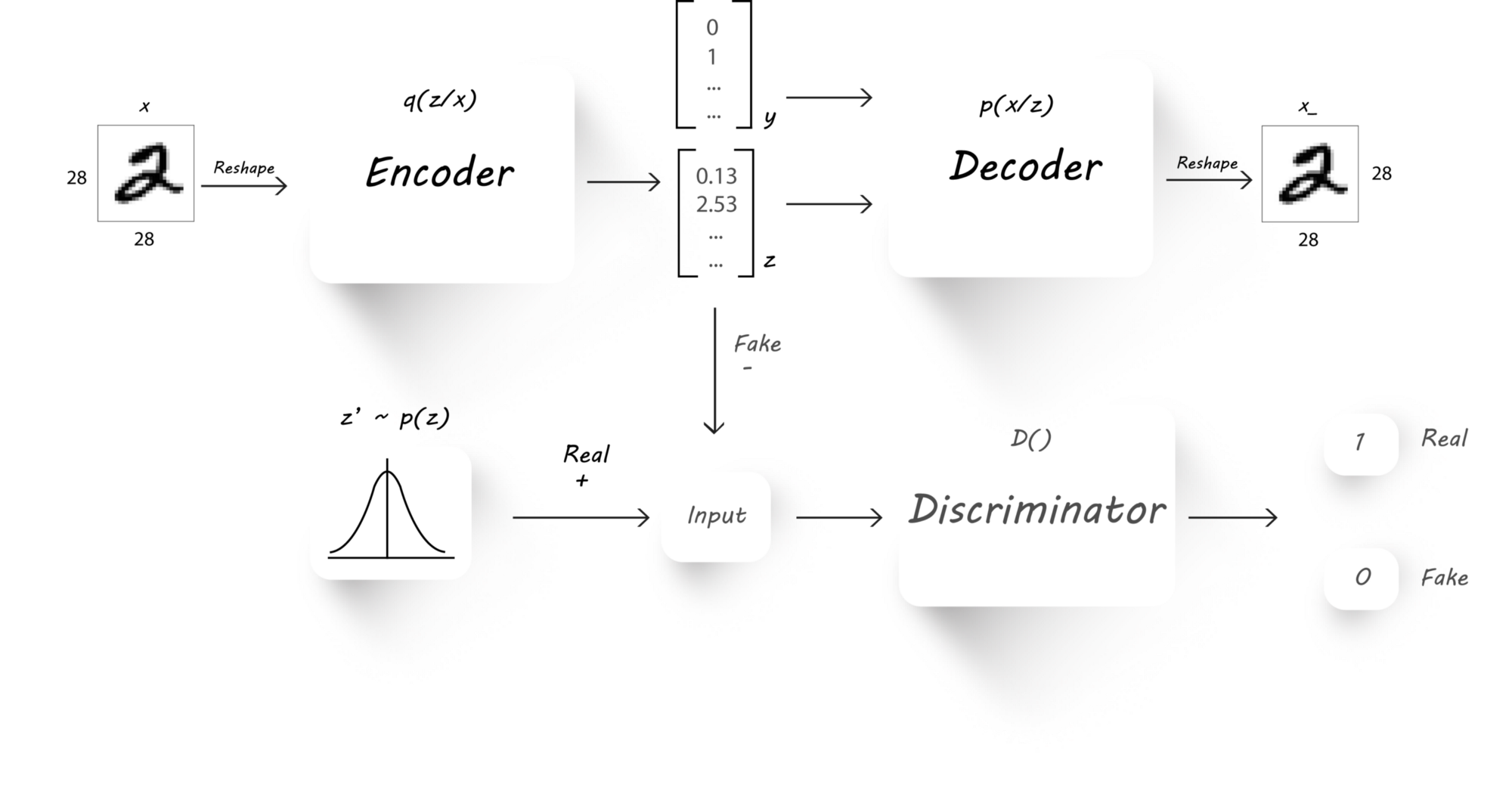 Training:
python3 supervised_adversarial_autoencoder.py --train True
Load model and explore the latent space:
python3 supervised_adversarial_autoencoder.py --train False
Example of disentanglement of style and content:
Training:
python3 supervised_adversarial_autoencoder.py --train True
Load model and explore the latent space:
python3 supervised_adversarial_autoencoder.py --train False
Example of disentanglement of style and content:
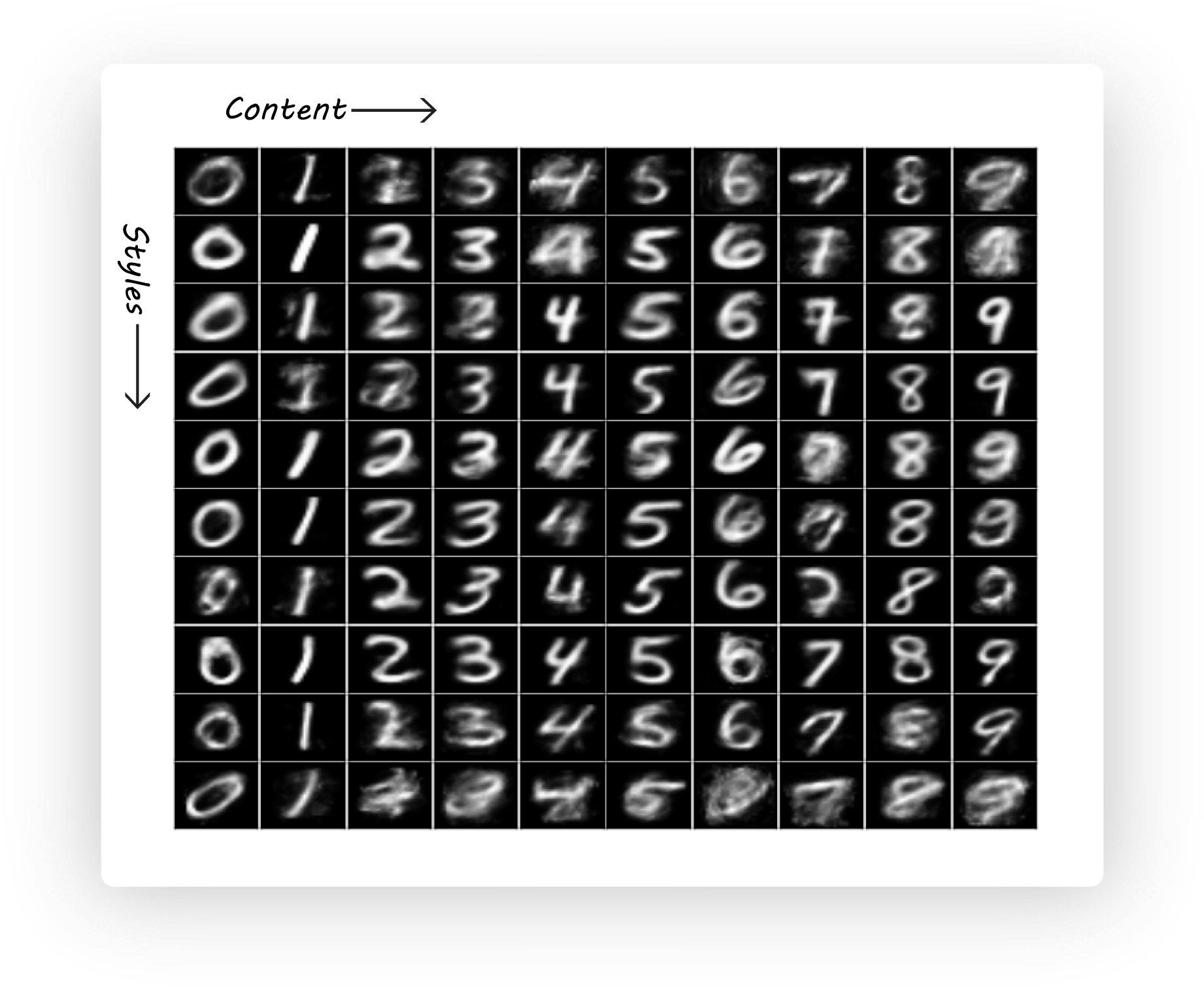 ### Semi-Supervised Adversarial Autoencoder:
#### Architecture:
### Semi-Supervised Adversarial Autoencoder:
#### Architecture:
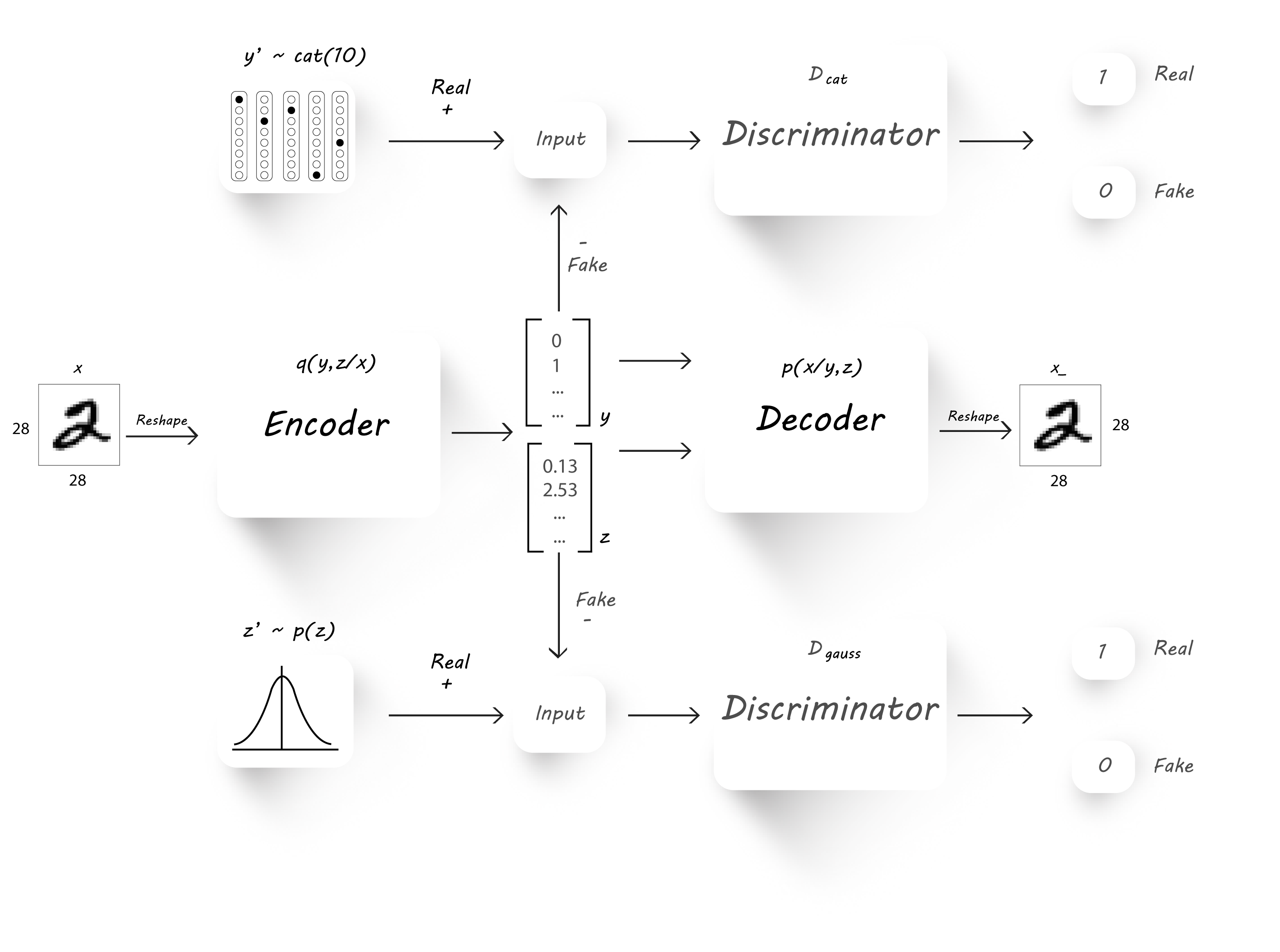 Training:
python3 semi_supervised_adversarial_autoencoder.py --train True
Load model and explore the latent space:
python3 semi_supervised_adversarial_autoencoder.py --train False
Classification accuracy for 1000 labeled images:
Training:
python3 semi_supervised_adversarial_autoencoder.py --train True
Load model and explore the latent space:
python3 semi_supervised_adversarial_autoencoder.py --train False
Classification accuracy for 1000 labeled images:

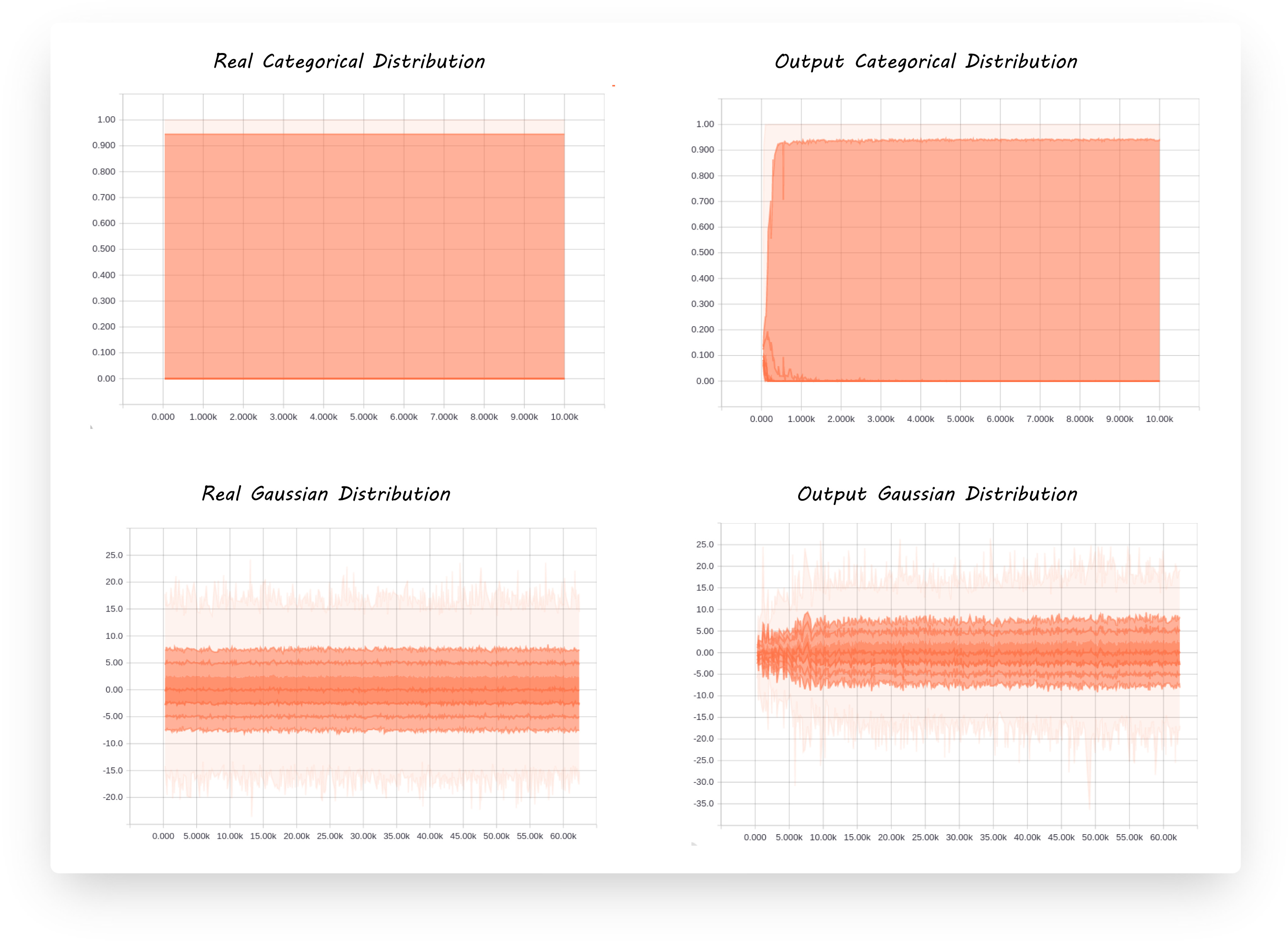 ***Note:***
* Each run generates a required tensorboard files under `./Results///Tensorboard` directory.
* Use `tensorboard --logdir ` to look at loss variations
and distributions of latent code.
* Windows gives an error when `:` is used during folder naming (this is produced during the folder creation for each run).I
would suggest you to remove the time stamp from `folder_name` variable in the `form_results()` function. Or, just dual boot linux!
## Thank You
Please share this repo if you find it helpful.
***Note:***
* Each run generates a required tensorboard files under `./Results///Tensorboard` directory.
* Use `tensorboard --logdir ` to look at loss variations
and distributions of latent code.
* Windows gives an error when `:` is used during folder naming (this is produced during the folder creation for each run).I
would suggest you to remove the time stamp from `folder_name` variable in the `form_results()` function. Or, just dual boot linux!
## Thank You
Please share this repo if you find it helpful. This repository contains code to implement adversarial autoencoder using Tensorflow.
Medium posts:
1. [A Wizard's guide to Adversarial Autoencoders: Part 1. Autoencoders?](https://medium.com/towards-data-science/a-wizards-guide-to-adversarial-autoencoders-part-1-autoencoder-d9a5f8795af4)
2. [A Wizard's guide to Adversarial Autoencoders: Part 2. Exploring the latent space with Adversarial Autoencoders.](https://medium.com/towards-data-science/a-wizards-guide-to-adversarial-autoencoders-part-2-exploring-latent-space-with-adversarial-2d53a6f8a4f9)
3. [A Wizard's guide to Adversarial Autoencoders: Part 3. Disentanglement of style and content.](https://medium.com/towards-data-science/a-wizards-guide-to-adversarial-autoencoders-part-3-disentanglement-of-style-and-content-89262973a4d7)
3. [A Wizard's guide to Adversarial Autoencoders: Part 4. Classify MNIST using 1000 labels.](https://medium.com/towards-data-science/a-wizards-guide-to-adversarial-autoencoders-part-4-classify-mnist-using-1000-labels-2ca08071f95)
## Installing the dependencies
Install virtualenv and creating a new virtual environment:
pip install virtualenv
virtualenv -p /usr/bin/python3 aa
Install dependencies
pip3 install -r requirements.txt
***Note:***
* *I'd highly recommend using your GPU during training.*
* *`tf.nn.sigmoid_cross_entropy_with_logits` has a `targets` parameter which
has been changed to `labels` for tensorflow version > r0.12.*
## Dataset
The MNIST dataset will be downloaded automatically and will be made available
in `./Data` directory.
## Training!
### Autoencoder:
#### Architecture:
To train a basic autoencoder run:
python3 autoencoder.py --train True
* This trains an autoencoder and saves the trained model once every epoch
in the `./Results/Autoencoder` directory.
To load the trained model and generate images passing inputs to the decoder run:
python3 autoencoder.py --train False
### Adversarial Autoencoder:
#### Architecture:
This repository contains code to implement adversarial autoencoder using Tensorflow.
Medium posts:
1. [A Wizard's guide to Adversarial Autoencoders: Part 1. Autoencoders?](https://medium.com/towards-data-science/a-wizards-guide-to-adversarial-autoencoders-part-1-autoencoder-d9a5f8795af4)
2. [A Wizard's guide to Adversarial Autoencoders: Part 2. Exploring the latent space with Adversarial Autoencoders.](https://medium.com/towards-data-science/a-wizards-guide-to-adversarial-autoencoders-part-2-exploring-latent-space-with-adversarial-2d53a6f8a4f9)
3. [A Wizard's guide to Adversarial Autoencoders: Part 3. Disentanglement of style and content.](https://medium.com/towards-data-science/a-wizards-guide-to-adversarial-autoencoders-part-3-disentanglement-of-style-and-content-89262973a4d7)
3. [A Wizard's guide to Adversarial Autoencoders: Part 4. Classify MNIST using 1000 labels.](https://medium.com/towards-data-science/a-wizards-guide-to-adversarial-autoencoders-part-4-classify-mnist-using-1000-labels-2ca08071f95)
## Installing the dependencies
Install virtualenv and creating a new virtual environment:
pip install virtualenv
virtualenv -p /usr/bin/python3 aa
Install dependencies
pip3 install -r requirements.txt
***Note:***
* *I'd highly recommend using your GPU during training.*
* *`tf.nn.sigmoid_cross_entropy_with_logits` has a `targets` parameter which
has been changed to `labels` for tensorflow version > r0.12.*
## Dataset
The MNIST dataset will be downloaded automatically and will be made available
in `./Data` directory.
## Training!
### Autoencoder:
#### Architecture:
To train a basic autoencoder run:
python3 autoencoder.py --train True
* This trains an autoencoder and saves the trained model once every epoch
in the `./Results/Autoencoder` directory.
To load the trained model and generate images passing inputs to the decoder run:
python3 autoencoder.py --train False
### Adversarial Autoencoder:
#### Architecture:
 Training:
python3 adversarial_autoencoder.py --train True
Load model and explore the latent space:
python3 adversarial_autoencoder.py --train False
Example of adversarial autoencoder output when the encoder is constrained
to have a stddev of 5.
Training:
python3 adversarial_autoencoder.py --train True
Load model and explore the latent space:
python3 adversarial_autoencoder.py --train False
Example of adversarial autoencoder output when the encoder is constrained
to have a stddev of 5.
 **_Matching prior and posterior distributions._**

**_Distribution of digits in the latent space._**
### Supervised Adversarial Autoencoder:
#### Architecture:
**_Matching prior and posterior distributions._**

**_Distribution of digits in the latent space._**
### Supervised Adversarial Autoencoder:
#### Architecture:
 Training:
python3 supervised_adversarial_autoencoder.py --train True
Load model and explore the latent space:
python3 supervised_adversarial_autoencoder.py --train False
Example of disentanglement of style and content:
Training:
python3 supervised_adversarial_autoencoder.py --train True
Load model and explore the latent space:
python3 supervised_adversarial_autoencoder.py --train False
Example of disentanglement of style and content:
 ### Semi-Supervised Adversarial Autoencoder:
#### Architecture:
### Semi-Supervised Adversarial Autoencoder:
#### Architecture:
 Training:
python3 semi_supervised_adversarial_autoencoder.py --train True
Load model and explore the latent space:
python3 semi_supervised_adversarial_autoencoder.py --train False
Classification accuracy for 1000 labeled images:
Training:
python3 semi_supervised_adversarial_autoencoder.py --train True
Load model and explore the latent space:
python3 semi_supervised_adversarial_autoencoder.py --train False
Classification accuracy for 1000 labeled images:

 ***Note:***
* Each run generates a required tensorboard files under `./Results/
***Note:***
* Each run generates a required tensorboard files under `./Results/